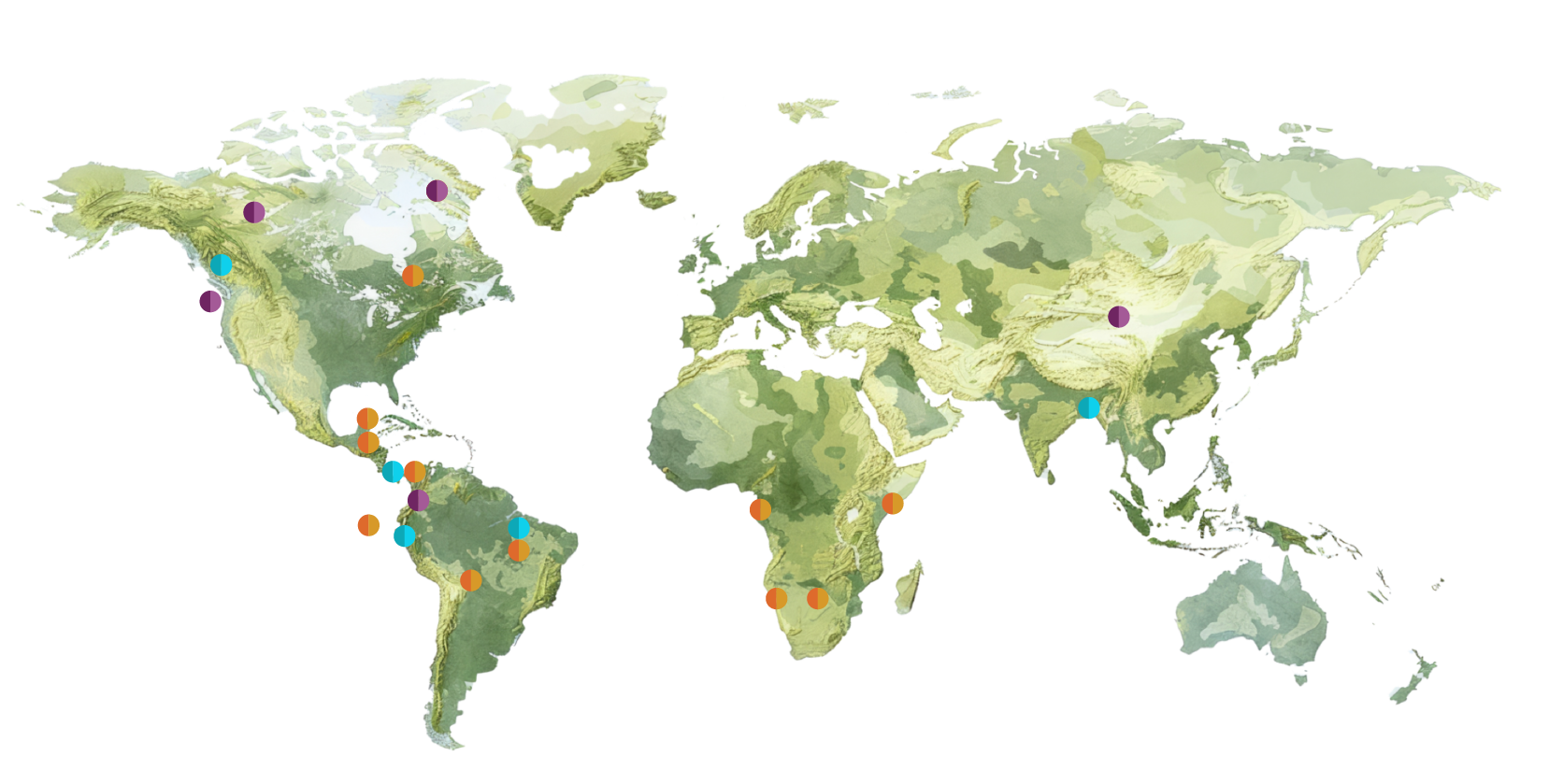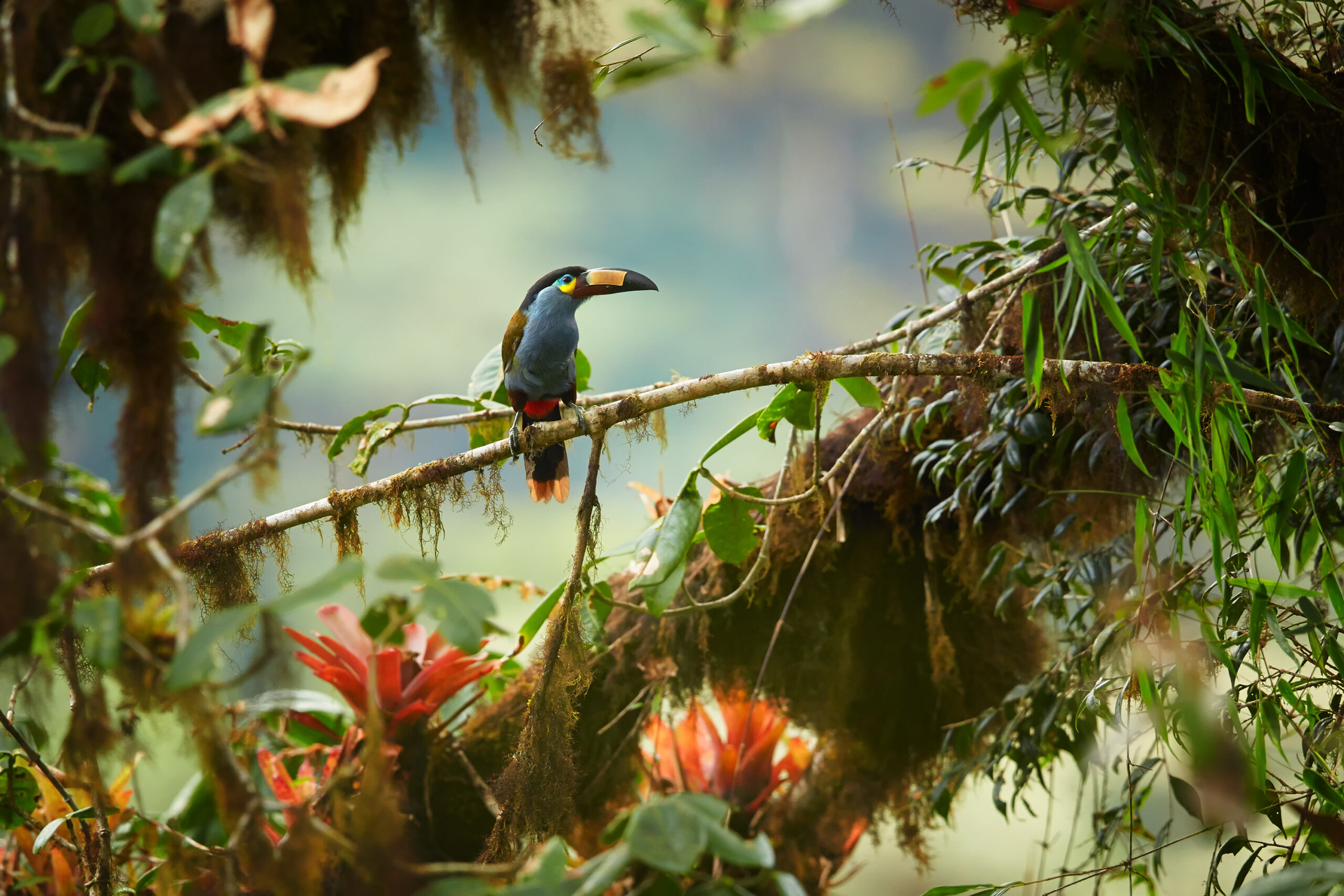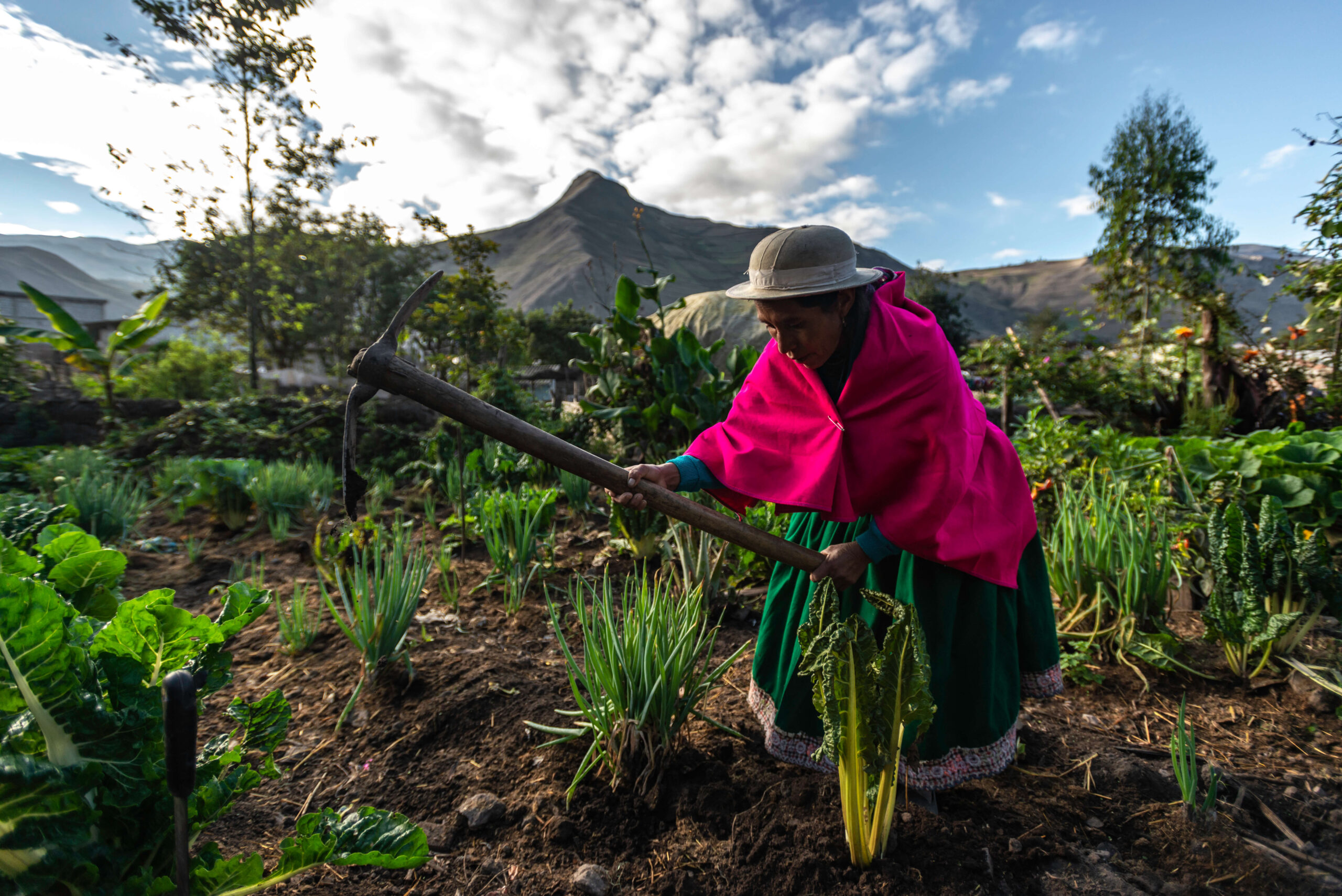Enduring Earth is founded on the principle that enduring, transformative conservation at scale is only possible when local partners, governments, and funders lead together in partnership. Through innovative financing and inclusive governance, we seek to advance the stewardship of terrestrial, marine, and freshwater ecosystems in ways that respect local context and embrace complexity.
Launched in 2021 by The Nature Conservancy, The Pew Charitable Trusts, World Wildlife Fund, and ZOMA LAB, Enduring Earth aspires to conserve 600 million hectares of lands and waters by 2030 through Project Finance for Permanence (PFP) model. At its core, this effort is stewarded by Indigenous peoples, local communities, governments, and funders, each bringing essential vision and decision-making to the table.
To date, progress has been possible only through deep, trust-based collaboration with over 150 local partners across Canada, Mongolia, and Colombia. Together, we have helped secure durable financing for conservation outcomes and strengthened livelihoods, spanning 207 million hectares. This ongoing work extends to eleven more PFPs that are in development across thirteen countries, including the first such efforts in Africa.
Yet it is not the scale alone that is key, but the patient, adaptive, and partnership-led approach that has enabled this acceleration. When the PFP model first emerged over two decades ago, it represented a bold experiment, with impact growing incrementally: between 2006 and 2019, five PFPs conserved 87 million hectares. Today, thanks to the leadership, knowledge, and expertise of local partners, the PFP community is on track to durably conserve 260 million hectares within just four years – nearly tripling previous gains in a quarter of the time.
Project Finance for Permanence Initiatives Around the World

11 PFP projects in planning in Brazil, Belize, Bolivia, Botswana, Canada, Eastern Tropical Pacific, Kenya, Gabon, Mexico, Namibia, Panama
5 PFP projects in implementation, established and led by government, communities, Indigenous peoples, First Nations, local partners
5 PFP projects agreed prior to Enduring Earth partnership
As we look forward, our ambition remains clear, but so does our awareness that enduring conservation is a journey, one that depends on continued adaptability, learning, problem-solving, and respect for the voices that make it possible.
Each PFP is unique and complex, shaped by the distinct social, ecological, and economic realities of its setting. Designing and implementing these commitments demands not only technical rigor but also transparent dialogue, and shared learning, especially when reconciling diverse visions, navigating legal and financial complexities, and building lasting stewardship. We have learned through the process that consensus emerges through patience and trust, and progress relies on a willingness to reflect, adapt, and learn from challenges together.
The collaborative, evolving nature of the PFP model strengthens global biodiversity outcomes, helping align priorities with the targets of the Kunming-Montreal Global Biodiversity Framework. Our collective achievements are possible only because of the leadership, knowledge, and tenacity of those leading this work.

Nature
Durably protect and conserve lands, freshwater, and ocean

Community
Work in partnership with all stewards of the environment

Partnership
Supporting local leaders for a resilient planet
A PFP is a financial model that brings together governments, Indigenous peoples and local communities, funders, and other partners to secure long-term conservation, full and sustained funding, and community benefits. Through this approach, protected places stay protected because they are collaboratively designed, locally-led, nationally supported, sustainably funded, and highly accountable. The strong structure of a PFP agreement provides confidence that each project will be fully funded, well-managed, and positioned for long-term success.
The PFP model fully funds large-scale conservation projects upfront and secures major commitments to conservation. Our approach recognizes that economic development and resilient communities are instrumental for conservation permanence. Enduring Earth is committed to uphold the rights of people and create opportunities for sustainable growth; working together, we have what it takes to create a better and more prosperous future.
